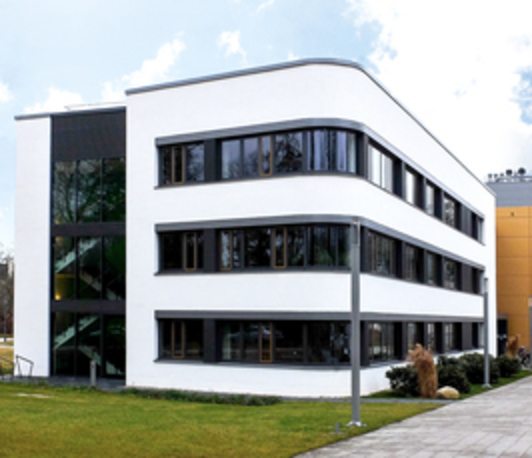Ultrafast Exciton Dynamics in Moiré Heterostructures: a Time-resolved Momentum Microscopy Study
- PC Department Seminar
- Date: Jun 26, 2023
- Time: 11:00 AM (Local Time Germany)
- Speaker: Marcel Reutzel
- Georg-August Universität Göttingen
- Location: Building G
- Room: 2.06
- Host: Melanie Müller

In TMD stacks consisting of at least two layers, the interlayer interaction can be precisely controlled by manipulating the twist angle: The misalignment of the crystallographic directions leads to a momentum mismatch between the high symmetry points of the hexagonal Brillouin zones. This strongly impacts the interlayer wavefunction hybridization, and, moreover, adds an additional moiré potential. Crucially, in this emergent energy landscape, dark intra- and interlayer excitons dominate the energy dissipation pathways. While these dark excitonic features are hard to access in all-optical experiments, time-resolved momentum microscopy [3] can provide unprecedented insight on these quasiparticles [4,5].
In my talk, I will present our recent results on the ultrafast formation dynamics of interlayer excitons in twisted WSe2/MoS2 heterostructures. First, I will report on the identification of a hallmark signature of the moiré superlattice that is imprinted onto the momentum-resolved interlayer exciton photoemission signal. With this data, we reconstruct the electronic part of the exciton wavefunction, and relate its extension to the moiré wavelength of the heterostructure. Second, I will show that interlayer excitons are effectively formed via exciton-phonon scattering, and subsequent interlayer tunneling at the interlayer hybridized ΣW valleys on the sub-50 fs timescale. Finally, I will discuss our recent efforts to monitor the interlayer exciton formation dynamics with spatiotemporal resolution using femtosecond photoelectron dark-field microscopy.
References
[1] Wang et al., Rev. Mod. Phys. 90, 021001 (2018).
[2] Wilson et al., Nature 599, 383 (2021).
[3] Keunecke et al., Rev. Sci. Ins. 91, 063905 (2020).
[4] Schmitt et al., Nature 608, 499 (2022).
[5] Bange et al., arXiv:2303.17886 (2023).